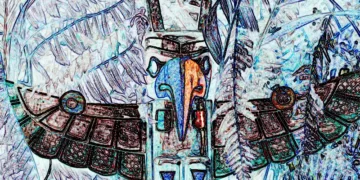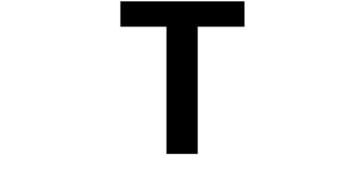With the recent release of Diablo IV, the latest instalment of the long-running action RPG game, I wanted to have a closer look at some of the religious elements at play across the series. Rather than consider some of the more surface level religious themes, I wanted to tease out something a bit deeper and unique. In this case the discernible whisperings of totemism, particularly in relation to the Druid character class.
Religions of Diablo
Diablo has a significant weave of religion throughout, including a variety of denominations. There are generally three categories of religions each made up of a number of denominations. The religions of Light include the Cathedral of Light, Skatsim, and Zakarum faiths. The religions of Darkness include The Triune and Kazra traditions. A number of other religions are present including the Priests of Rathma, the Sisterhood of the Sightless Eye, and the Pantheon of the Askari. The well-versed in Diablo lore will be keen to point out though that the Druids are not of a religion. However, this depends on which sociological view you lean towards in terms of totemism.
What is Totemism
The dictionary definition of totemism has it that totemism is a system of belief through which humans have a kinship or mystical relationship with a spirit such as that of an animal or plant. Both Durkheim (1995) and Lévi-Strauss (1970) had their own interpretations of totemism. Durkheim saw totemism as a ‘primitive’ form of religion which expressed a social reality and the values of a collective group. Levi-Strauss saw totemism as an illusory mode of thought which demonstrated human capacity for expression of abstract thought. However, their views tend to overlap in certain places.
Totemism and Nature
Levi-Strauss (1970: 57) observes the phenomena of the relationship between totemism and nature:
The affinity between man and animal is easily verifiable: like man, the animal moves, emits sounds, expresses its emotions, has a body and a face. What is more, its powers seem superior to those of man: the bird flies, the fish swims, reptiles shed their skin. The animal occupies an intermediary position between man and nature, and inspires in the former a mixture of feelings: admiration or fear, and lust for food, which are the ingredients of totemism.
Druids and Nature
In Diablo, the Druids are a shapeshifting class of character who go through transfiguration, morphing into animal form. This metaphorises and symbolises a fusion between human and nature. According to Diablo lore, the Druids follow a philosophy of Caoi Dúlra which commands a oneness with nature. Druids also worship the sprits of the wild with a belief that their animal forms are gifts of the spirits. Drawing on Diablo lore again:
Druids are friends to the animals of the wilds and can call upon them to aid in his struggle. They can also use their heightened rapport with the animals to change the shape of their own body, drawing on the strengths and abilities of their woodland companions to better serve their cause”.
This reflects Frazer (1887: 2) when he argues that:
The connexion between a man and his totem is mutually beneficent; the totem protects the man, and the man shows his respect for the totem in various ways, by not killing it if it be animal, and not cutting or gathering it if it be a plant.
Totems as Objectification
When we consider a totem itself, there is an underlying objectification, in this case the objectification of animals, to the point at which they take on a sacred status. Although there is a distinct connection between man and animal, Durkheim (1995: 191) highlights the objectifying element of totemism stating:
totemism is not the religion of certain animals, certain men, or certain images; it is the religion of a kind of anonymous and impersonal force that is identifiable in each of these beings but identical to none of them. None possesses it entirely; and all participate in it
This suggests that the ‘force’, or essence or spirit even, is external to both human and animal but it is ultimately being imbued into the animal giving it an objectified status. This is also the same principle as Levi-Strauss’ formulation of totemism that says it is the capacity for humans to express abstract thought. When we think in such a manner, we can apply all sorts of phenomena to things. Think about how religious items are seen to be imbued with ‘holiness’, how water or bread can be ‘blessed’. These are not inherent properties of water or bread but rather abstract thought applied to an object in Levi-Strauss’ terms, or as a ‘force’ which sits in-between human and object in Durkheimian terms. Totemism functions on that same principle. Frazer (1887: 1) describes a totem as:
a class of material objects which a [individual] regards with superstitious respect, believing that there exists between him and every member of the class an intimate and altogether special relation
Frazer (1887: 2) goes on to say that a totem is
never an isolated individual, but always a class of objects, generally a species of animal or of plants
Totemism as Symbolic Representation
Objects become symbolically representative and Ridington & Ridington (1970: 50) note that:
totemism is a form of symbolic communication that categorically associates human experience with its objects
To aid in understanding symbolic meaning, you might want to read our explainer article on demonstrating symbolic meaning. Totemism then, is essentially the interaction of symbolic meaning, either between human and animal (or Druid and animal) or human and object. It is an expression of humanness and, depending on whether you agree with Durkheim or not, a form of religiousness.
Durkheim (1995: 208) also argued that the totemic symbol is a tangible expression of something else. This something else is what Durkheim called the ‘totemic principle’ or God. However, rather than being perceived as an actual god, Durkheim (1995: 208) further argues that it is, in fact, the outward expression of the collective (clan, family, tribe etc.). It is kind of like seeing society as greater than the individual, but the externality of this society is held in such reverence that it must be expressed as sacred through the tangible totem around which all the individuals who form the collective unify. In Diablo, this can be seen as occurring through the Druid’s oneness with nature, where nature and its symbols become representative of the collective.
Individual Totemism
Alternatively, Elkin (1933: 113-114) specifically notes the existence of an ‘individual totemism’. In this form, an individual, often a shaman or sorcerer, has a spirit relationship with an animal species. The animal is said to give assistance to the shaman as either a maleficent or beneficent agent or as messenger or spy. Referring to real-life tribes in Australia:
amongst the Kamilaroi and most tribes of New South Wales, any person who wishes to acquire skill in magic must acquire a special relation to some species of animal
This reflects the lore of the games, particularly for the Druid class. In terms of Druidic history, the lore says that shamans retreated into the forest lands to establish stone-towers known as Druid Colleges. These colleges formed teaching centres where Druids developed their thinking to align themselves with nature. As part of this teaching, they learned their system of values through Caoi Dúlra philosophy as well as the methods to shapeshift, call upon animals, and share strength from their totems. As with the real-life Kamilaroi, the druids also come to acquire magic through their relationships with animals.
Around the Druid character class in Diablo, we see how totemism comes to be represented in the game. Through utilising the human and nature relationship, we find some common ground with sociological insights into totemism. Totemism is a theme which can be found in other games too. If you are interested in this theme, you might also want to check out the presence of totemism in World of Warcraft, Horizon Zero Dawn, or Far Cry Primal. For now, although totemism is one of the more deeply hidden themes of the game, it nonetheless provides an interesting focus point and draws out some of the more arcane sociological concepts which exist in the field.
References
Durkheim, E. (1995). The Elementary Forms of Religious Life (New Ed.). Free Press.
Elkin, A.P. (1933). studies in australian totemism: the nature of australian totemism. Oceania, 4(2), pp.113–131.
Frazer, J.G. (1887). Totemism. A.& C. Black.
Levi-Strauss, C. (1970). Totemism. Beacon Press.
Ridington, R., & Ridington, T. (1970). The Inner Eye of Shamanism and Totemism. History of Religions, 10(1), 49–61. http://www.jstor.org/stable/1061822











